Second Lieutenant Richard Willard Moody
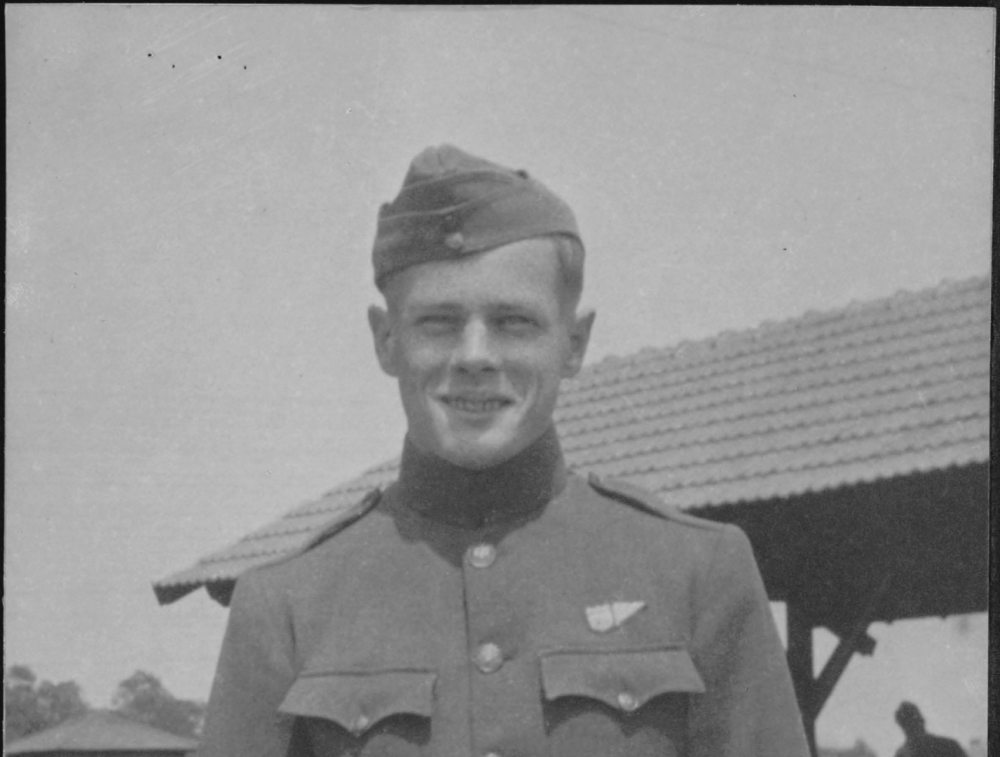
- Unit: 129th Aero Squadron assigned to Escadrille BR129
- Date of Birth: April 18, 1898
- Entered the Military: July 31, 1917
- Date of Death: July 16, 1918
- Hometown: Minneapolis, Minnesota
- Place of Death: Villeneuve-les-Vertus, France
- Award(s): French Croix de Guerre with palm
- Cemetery: Plot A, Row 5, Grave 22. Oise-Aisne American Cemetery, Seringes-et-Nesles, France
North Lakes Academy Charter School
2017-2018
Early Life
Born on April 13, 1898, Second Lieutenant Richard Willard Moody grew up in the affluent area of Minneapolis, Minnesota. His father, Dr. Frank E. Moody, served the Minneapolis area as a dentist and as president of the Minnesota State Board of Medical Examiners. A well-known member of the Swedish-American community, Dr. Moody was an active Lutheran and Mason, director of a local bank, and pillar of various exclusive Scandinavian men’s clubs in Minneapolis.
But the Moody family’s roots did not emerge from privilege. Dr. Moody emigrated from Söraby, Sweden in 1882 as a young boy and settled in St. James, Minnesota with his large family to establish a family farm. In 1885, he moved to Minneapolis to seek dental training at the University of Minnesota where he met his first wife, Jonina Rose Peterson, an Irish immigrant. They married in 1897, and Dr. Moody established his dental practice in Minneapolis. Partnering with his brother, Dr. Adolph F. Moody, the brothers rented space in the new Syndicate Building, a massive retail and office center constructed in 1883.
A little over a year after their son Richard’s first birthday, Jonina tragically died of pneumonia at age 27. Dr. Moody met his second wife, Clara A. Dahle, shortly after. Dahle hailed from Mount Horeb, Wisconsin and was the daughter of United States Congressman Herman B. Dahle. In March 1904, Dr. Moody and Clara Dahle married after the birth of their first child, Harold.
The Moody family purchased a home on Park Avenue in Minneapolis and welcomed daughter Marie Moody in 1909. Due to Mrs. Moody’s strong ties to her family’s hometown in Wisconsin, the Moody children spent a portion of their childhood in Mount Horeb. Richard Moody attended middle and high school in Wisconsin and was confirmed in his stepmother’s childhood Norwegian Lutheran church.
According to his parents, Richard Moody was particularly skilled at mathematics and aspired to become a physician. In 1914, after graduating at the top of his high school class at age 16, Moody attended Gustavus Adolphus College for one year. In 1915, he transferred to the University of Minnesota College of Agriculture to continue his studies and joined the Minnesota National Guard.
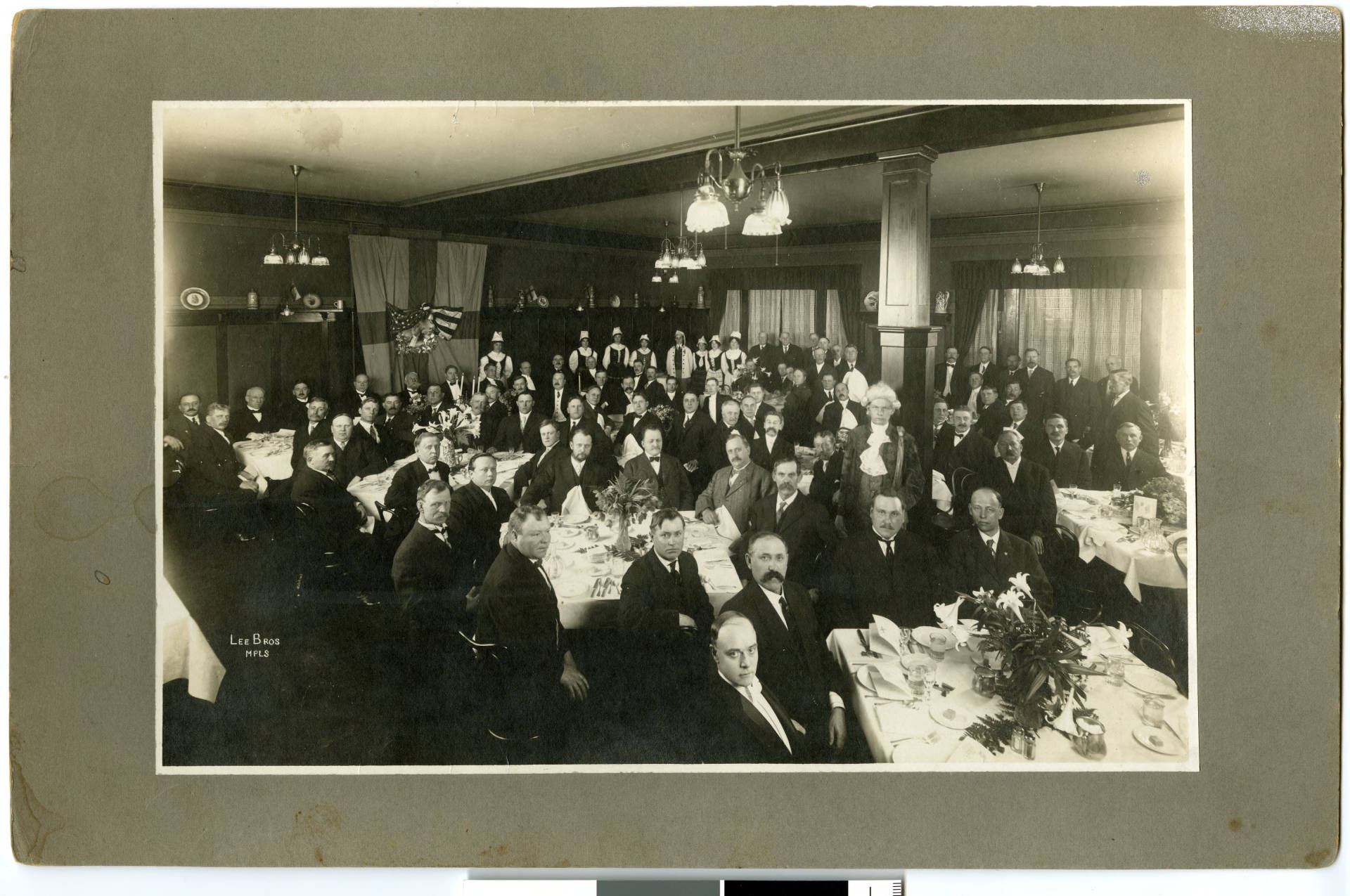
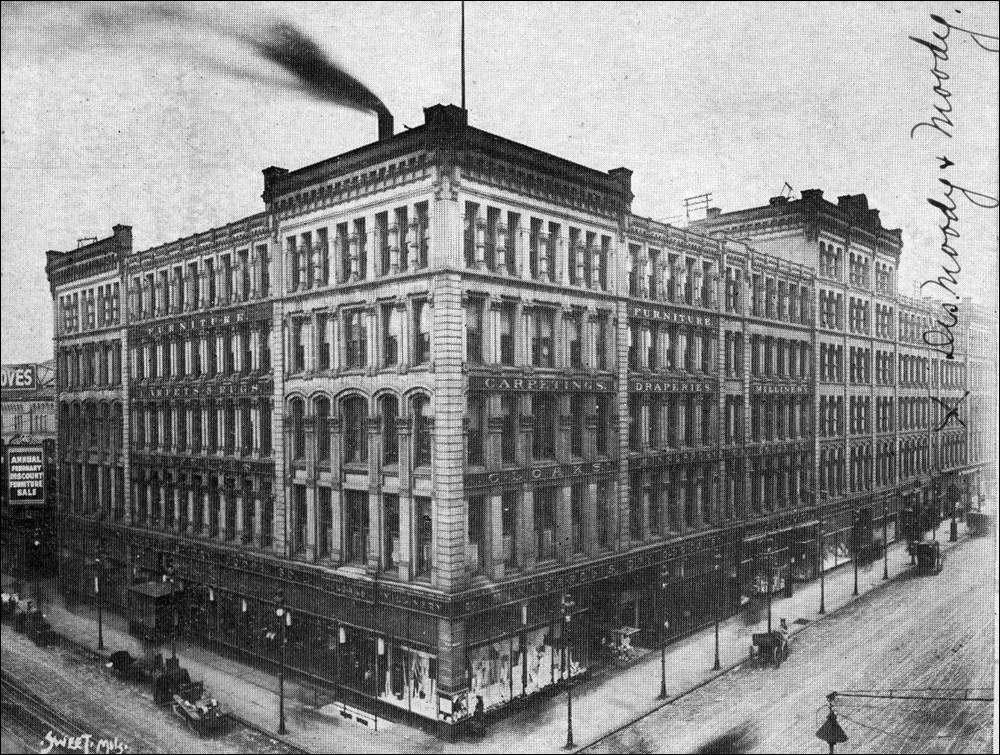
Military Experience
On the Border
While World War I raged in Europe, a domestic threat occupied the United States. In March 1916, Mexican general Francisco “Pancho” Villa led a small force of rebels on a cross-border raid of Columbus, New Mexico, killing 24 Americans, including 14 soldiers. General John J. Pershing pursued Villa into Mexico with thousands of soldiers stationed at the border under his command. This “punitive expedition” would leave undefended gaps in the U.S. – Mexico border and failed to prevent further raids. In June, President Woodrow Wilson signed the National Defense Act of 1916, which gave the president the authority to federalize the National Guard, heightened training and testing for troops, and increased general preparedness of the U.S. Army. Signed in the context of the looming threat in Europe, Wilson used his new authority to federalize the National Guard to aid in the ongoing border conflict.
Minnesota’s entire National Guard was called up on June 18, 1916. At the time of mobilization these units were understaffed, undertrained, and undersupplied. Nearly 5,000 Minnesotans saw duty on the border, including Battery F of the 151st Field Artillery, composed entirely of University of Minnesota students, including Moody. The unit was stationed at Camp Llano Grande, Texas, ten miles north of the Rio Grande. Guardsmen spent the majority of their deployment learning essential soldiering skills until the Minnesota troops were mustered out in early 1917.
Choosing the Army Air Services
When General Pershing departed to lead the American Expeditionary Forces (AEF) in France in May 1917 his staff included an aviation officer. But an internal analysis of the Air Services detailed that the U.S. Army was “almost totally unprepared in aeronautical experience, equipment, and personnel.”
When Moody enlisted in the U.S. Army in September 1917 and joined the Aviation Section, Signal Reserve Corps (ASSRC), he received training in a new military field. He attended an officer training program outside of Atlanta, Georgia, and graduated with approximately 700 other officers. After a short stint at the Aviation General Supply Depot and Concentration Camp in Garden City, New York, Moody left for France in December 1917.
Moody arrived in Clermont-Ferrand, France, for additional training and to await placement in an American squadron, the first of which arrived in France in April 1918. Instead, he was selected to serve not in the AEF, but a French escadrille. In his letters home, he reported that he was initially disappointed in his assignment and was concerned for his ASSRC friends. In a letter from Chartres, France, in early June, Moody wrote, “If you will take my honest advice you will try to remain here as an instructor. Don’t take this the wrong way for you’re no doubt the best bomber in this bunch. I think that it will be too hard on you to do any flying at high altitudes.”
Escadrille BR129
The assignment of American pilots and observers into French squadrons was not designed to be permanent. General agreements were made with the French command regarding how many American pilots the French squadrons could accommodate, and groups of eight or ten were sent out after receiving a small number of test flights on machines that were used at the front. Missions and skirmishes were often not well-documented and commanders relied entirely on firsthand accounts by pilots, both French and American, to determine the success of any such mission.
Escadrille BR129 was formed in mid-1917 as SOP129, as it was first created to fly the Sopwith 1B2. But in early February 1918, it was transformed into a bombing squadron, supplied with the Breguet 14B2, and reorganized into Groupe de Bombardement (Bombing Group) 9. When Moody was assigned to Escadrille BR129, he would have left with weekly reports, flying clothes, a revolver, cartridges, a holster, and a few other supplies.
On June 20, 1918 Moody reported to Escadrille BR129. He wrote,
“Four of us American [temporaries] are assigned to Escadrille 129 and we are certainly treated fine. Everything we want is done for us, we have excellent quarters in a chateau, and each one of us has an orderly who takes care of our room, shines our shoes, and brings us breakfast in bed every morning. This is certainly great after the treatment we have been getting in the past.”
According to ASSRC records, four American pilots and five American observers served Escadrille BR129. Assigned on the same day as Moody, most of these men had limited experience but logged numerous hours conducting dozens of bombing missions. In his first month, Moody participated in very few recorded bombing raids. He described these to his family back home:
“Our squadron is supposed to be on rest now, but Saturday an order came out to bomb about 10 miles over the lines…There were seven machines in our formation and two other formations. We got started O.K., but at 3,000 meters four of our machines went back. At 4,400 meters we became separated from them. As soon as we saw we were alone, the bombs were dropped and the machine turned south. Everything went nicely until we got down to 2,500 meters, when a German albatross hove in sight. It was about 1,000 meters away and above us. We immediately dove, for everything was greatly in his favor. However, he apparently did not see us for he went into the clouds and disappeared.”
Moody settled into his new unit. “The more I am with the French, the better I like it.” He explained to his family that poor weather provided him with the opportunity for two days leave in Paris. In his final letter home, Moody requested a pair of lined leather gloves and described how he and his American pilot, First Lieutenant D. W. Rich, had badly damaged a Breguet 14B2 on a rough landing. But his spirits remained high, and he confidently claimed to his parents that, “Next time I get to Paris, I am going to have my picture taken in full regalia.”
Escadrille BR129 was relocated to Bar-le-Duc, France to conduct reconnaissance and bomb bridges built by the Germans fighting at the Marne. On July 15, bombers over Dormans, France destroyed a bridge according to the diary of a French Escadrille BR129 pilot, Benoît Bellet. On that same day, a German patrol engaged Escadrille BR129’s formation. Between Château-Thierry and Verneuil, Moody’s craft took machine gun fire and a bullet severed Moody’s femoral artery. His pilot, First Lieutenant Rich, diverted and landed at the Villeneuve-les-Vertus Aerodrome and applied a tourniquet to the wound. But Moody lost consciousness. Moody died the next morning and was buried in a French cemetery outside the village.
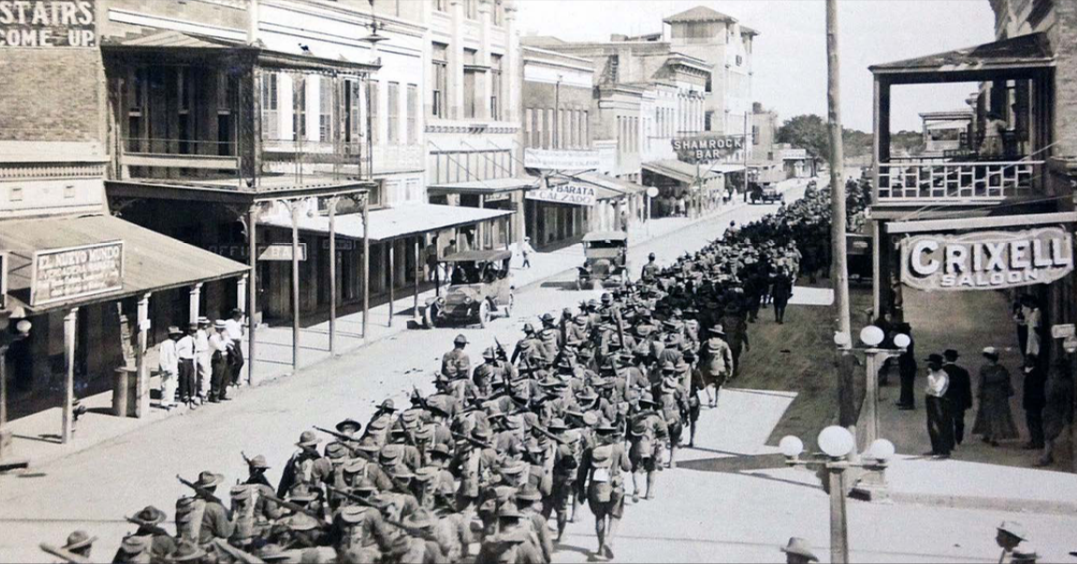
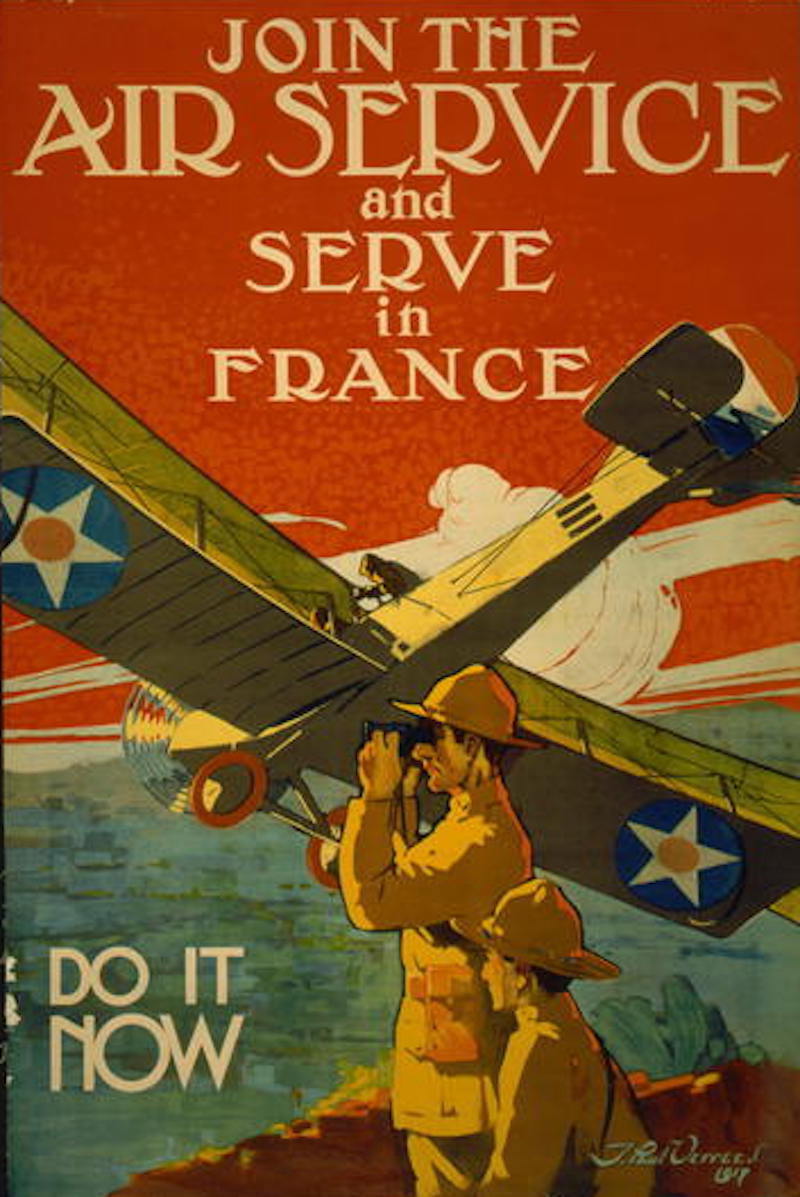
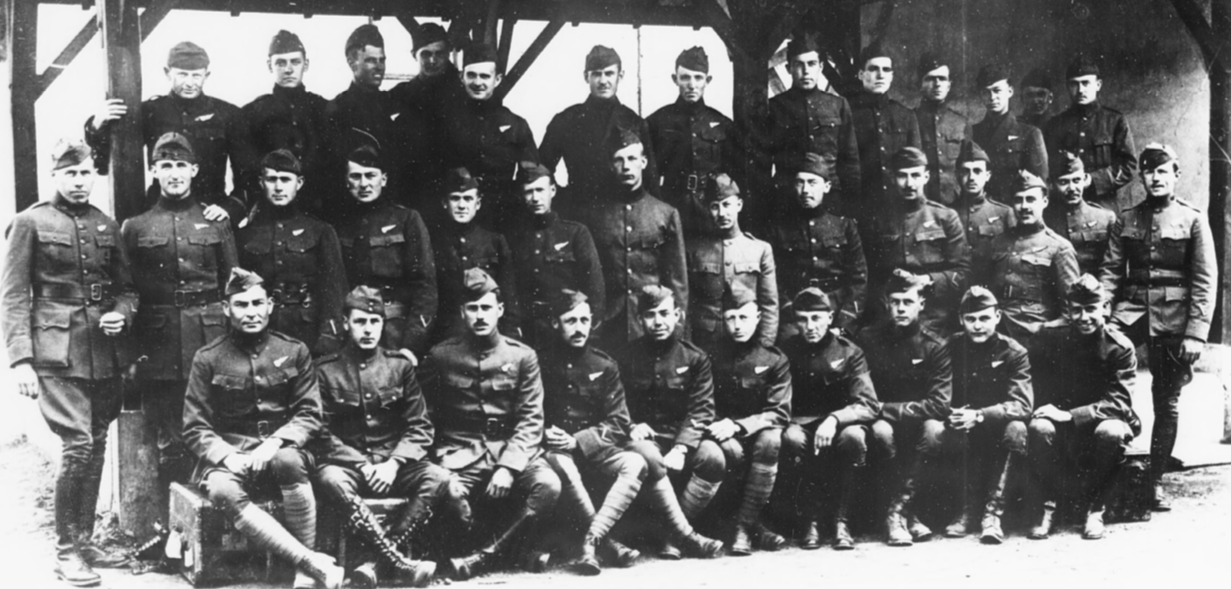
Eulogy
Reactions from Home
Moody’s family was shocked to hear of his death, as were his comrades. First Lieutenant Hal Green wrote in late July to Dr. Moody,
“Dear Dr. Moody, reports have come to me which I’m afraid are only too true that Dick has gone to rest. I’m still hoping against hope that the report of his death is an error…I want to tell you, sir, that Dick Moody was a gentleman. He was as square and true of a friend as I will ever have. He was one of the most popular fellows among us, and everybody feels his loss…He was a good pal.”
Due to his sacrifice, Moody was posthumously awarded the French Croix de Guerre with palm. His citation read, “Lieutenant Richard W. Moody…an observer who gave proof from his first sorties upon the enemy of an energy and abnegation worthy of the greatest praise.” Commemorations appeared in the Gustavus Adolphus College student newspaper and the University of Minnesota Alumni Weekly. The College of Agriculture recommended the planting of a grove of 17 trees on campus in honor of each of its students lost in the war. His father submitted multiple versions of Moody’s obituary in local Minneapolis newspapers.
Moody’s remains were disinterred from his resting place near Vertus. After his father requested that his son’s body remain in Europe, Moody was reburied in November 1919 at an AEF temporary cemetery. Located near Seringes-et-Nesles, this became Oise-Aisne American Cemetery.
Victory Memorial Parkway
Local communities in the Minneapolis-St. Paul area sought to commemorate the lost. A collaborative effort between the Hennepin County War Records Committee and the Minneapolis park system resulted in the creation of Victory Memorial Parkway or Victory Memorial Drive, a four mile green space and memorial preserved to honor World War I dead.
On June 11, 1921, the memorial dedication attracted significant attention. Representatives from the three Allied nations attended, a plane dropped poppies and peonies on the parkway, and local school children dedicated a memorial flagpole. M. de Fontnouvelle, the French consul in Chicago, shared his words of remembrance:
“Do not think for one moment that France ever will forget. No Frenchman will ever forget that the sons of Minneapolis and of America died for him and for his children. I can assure you that the American soldiers will always be remembered on our memorial day when we honor our own heroes. France prays for you as she does her own children. We have beauty in our country, but nothing more beautiful that this driveway will be and no sons more brave, more fitted to receive its dedication.”
Two years later, the memorial was enhanced through the addition of bronze tablets with the names of 568 Hennepin County men who died in the conflict as well as a dedication message issued by General Pershing. On the tenth anniversary of the signing of the armistice, individual bronze markers (crosses, Stars of David, or crescents) with the names of those same men were placed along the driveway. These were replaced in 1953 with markers embedded in the ground. Moody’s tablet still rests along this memorial today.
Gold Star Mothers Pilgrimage
After World War I, a group of gold star mothers took part in the Victory Memorial Parkway dedication ceremony in Minneapolis. In 1929, Congress approved funding pilgrimages for these women to visit their loved ones’ graves abroad between the years of 1930 and 1933. More than 350 Minnesota mothers were eligible to make such a trip.
For Clara Moody, this was an opportunity to finally put to rest the memory of her stepson. The family continued to struggle in the years after the war. In 1928, Harold Moody died of pneumonia. In 1930, Dr. Moody retired from his dental practice and moved his family to a new home in Minneapolis. He subsequently fell ill in 1931 and died from a stroke in February 1932. Her husband’s health prevented her from participating in a Gold Star Mothers pilgrimage and she declined the offer from the government three times. But in 1933, Clara Moody accepted the invitation and traveled to France.
On June 3, 1933 Clara Moody left on a train from Minneapolis for New York City. Upon her arrival in Paris, she visited the Louvre, the Arc de Triomphe, Napoleon’s tomb, and the Lafayette Escadrille memorial. She wrote to the government to thank them for the trip, and in particular, for permitting her to see her stepson’s burial site at Oise-Aisne Cemetery. “I will never forget the consideration and thoughtfulness…for the pleasant trip to the Battlefields of France, which the government so kindly gave me, one of the grateful Gold Star Mothers…It was a spiritual adventure from the beginning of the tour to the impressive moment when we stood by the graves of our boys in the Oise-Aisne.”

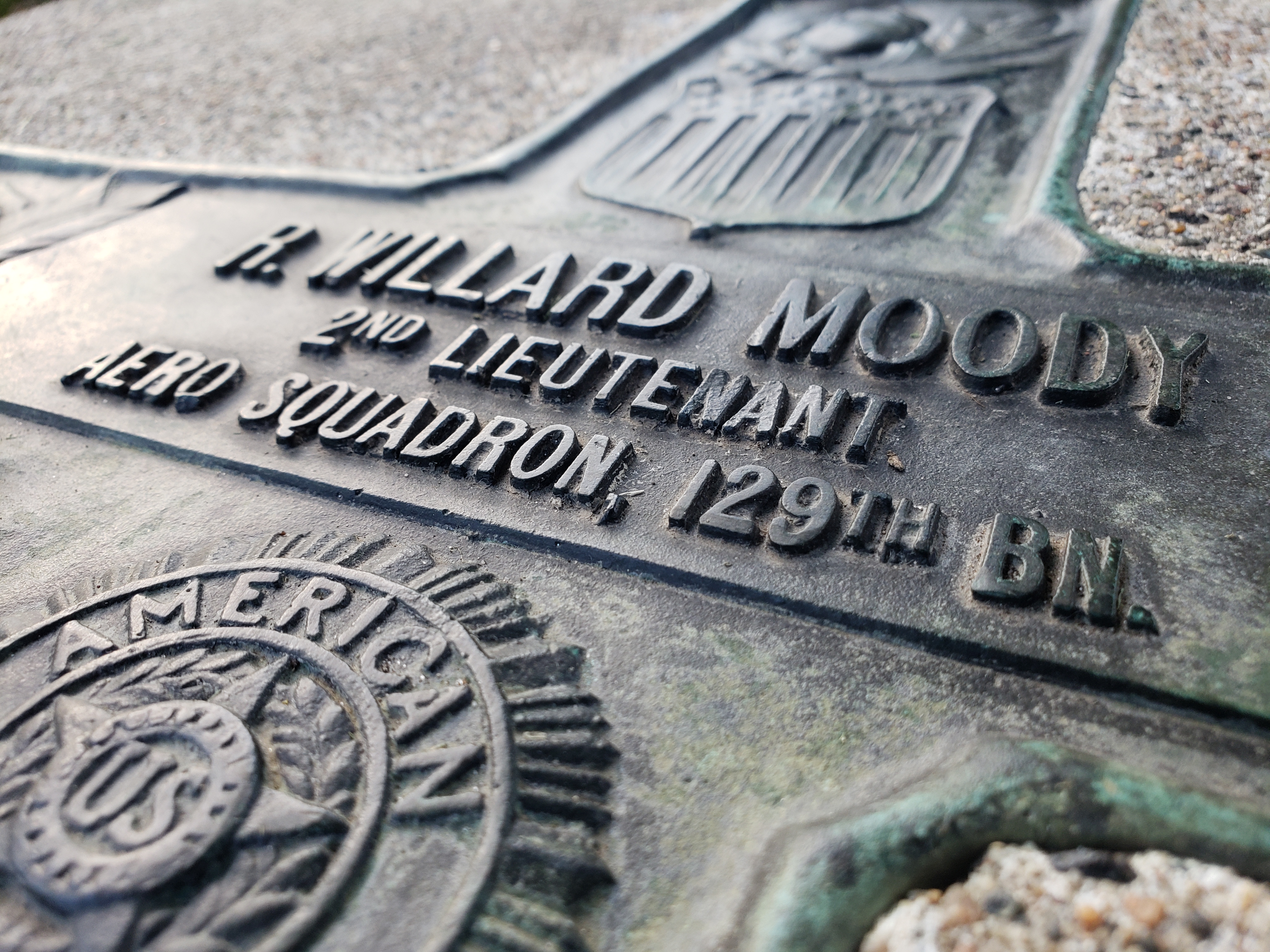
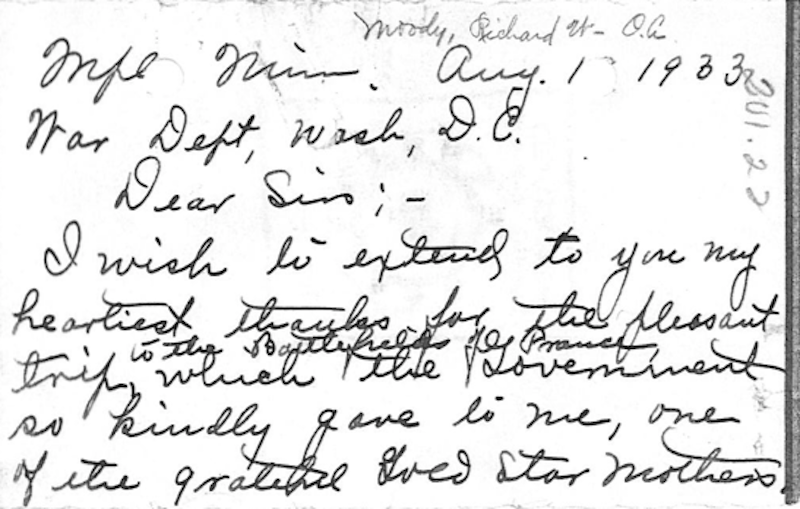
Reflection
Bibliography
Aeroplane in Flight Above Clouds at Paris, France. Photograph. March 6, 1919. National Archives and Records Administration (165-WW-22C-3). Image.
Airplane Types. Photograph. December 1918. National Archives and Records Administration (111-SC-021407-ac). Image.
Albin, Denis. Escadrille SOP129/BR129. 1918. Accessed June 30, 2018. albindenis.free.fr/Site_escadrille/escadrille129.htm
Albin, Denis. Photos of Escadrille SOP129/BR129. 1918. Accessed June 30, 2018. albindenis.free.fr/Site_escadrille/escadrille129.htm
American and French Officers Fraternizing at Chateaudun Banquet. Photograph. July 4, 1918. National Archives and Records Administration (Record Group 120). www.fold3.com/image/19059825.
Bellet, Benoît. War Diary of Slt Benoit Bellet, Pilot, Escadrille SOP129/BR 129. Accessed June 30, 2018. albindenis.free.fr/Site_escadrille/Benoit_Bellet.htm.
Berg, Christoph. “The History of the U.S. Air Service in World War I.” The Centenary Department Committees. April 10, 2017. Accessed December 1, 2018. centenaire.org/en/autour-de-la-grande-guerre/aviation/history-us-air-service-world-war-i.
Minnesota National Guard Units at Camp Llano Grande, Texas. 1916. Minnesota Historical Society (1661430).
“College of Agriculture, Forestry, and Home Economics In Honor and Memory of Those Who Died in Service.” Minnesota Farm Review 26, Number 7. November 10, 1921.
Collin, Louis L. History of the 151st Field Artillery, Rainbow Division, Volume I. Saint Paul: Minnesota War Records Commission, 1924.
Death Certificate for Clara A. Moody. December 8, 1960. File Number 30042. Minnesota Department of Health Division of Vital Statistics.
Death Certificate for Frank E. Moody. February 23, 1932. File Number 17984. Minnesota Department of Health Division of Vital Statistics.
Death Certificate for Harold J. Moody. January 2, 1928. Michigan Department of Community Health, Division for Vital Records and Health Statistics. Digital Images. ancestry.com.
Eddy, C.L. The Wreck of a Sopwith Plane. Photograph. October 10, 1918. National Archives and Records Administration (111-SC-27065-ac). Image.
Evangelical Lutheran Church in America Archives. Digital Images. ancestry.com.
Farrow, Edward S. A Dictionary of Military Terms. New York: Thomas Y. Crowell Company Publishers, 1918.
“Flights of the Great War.” French Air Force Traditions. Accessed December 2, 2018. www.traditions-air.fr/en/escadrilleintro_en.htm.
French Planes Ready to Leave on Bombardment Flight. Photograph. September 26, 1918. National Archives and Records Administration (165-WW-15C-3). Image.
General Catalogue of the University of Minnesota. Minneapolis: University and General Alumni Association, 1916.
Goldshing, L. P. Four Different Sizes and Types of Bombs. Photograph. June 14, 1918. National Archives and Records Administration (111-SC-14764-ac). Image.
Gold Star Record for Richard W. Moody. Minnesota Commission of Public Safety, 1918-1921. Minnesota Historical Society. Accessed May 25, 2018. media.mnhs.org/people/goldstarroll/wwi_goldstarroll_11151338.pdf.
The Gopher. Volume 33. Minneapolis: University of Minnesota, 1920.
Gorrell, Edgar S. “Gorrell’s History of the American Expeditionary Forces Air Service, 1917-1919.” Washington, D.C.: National Archives Microfilm Publications, 1975.
Hubbard, C.J. Parade at Glenwood-Camden Parkway in 1921 Minneapolis, Minnesota. 1921. Minnesota Reflections. Accessed December 8, 2018. reflections.mndigital.org/catalog/p16022coll55:1928#/image/0.
Hudson, Paul S. “World War I Military Camps.” New Georgia Encyclopedia. August 5, 2016. Accessed December 6, 2018. www.georgiaencyclopedia.org/articles/history-archaeology/world-war-i-military-camps.
“Impressive Rites for Soldier Dead.” Minnesota Farm Review 24, Number 27. April 15, 1920.
Johnson, Jack K. “1916: Trial Run on the Mexican Border, Part I.” Allies, Newsletter for Members and Friends. Vol XXIV, No. 3 (Summer 2016). Military Historical Society of Minnesota.
Johnson, Jack K. “1916: Trial Run on the Mexican Border, Part II.” Allies, Newsletter for Members and Friends. Vol XXIV, No. 4 (Fall 2016). Military Historical Society of Minnesota.
Johnson, Sarah. “Victory Memorial Drive.” Hennepin History Museum. 2014. Accessed September 15, 2018. www.sarahjohnsonwrites.com/wp-content/uploads/2014/07/Victory-Memorial-Drive.pdf
Kadel & Herbert. American Aeroplane Hangar in France. Photograph. May 29, 1918. National Archives and Records Administration (165-WW-7A-2). Image.
Letters from Frank E. Moody to Moody Family, 1919. Courtesy of James Moody.
Letters from Richard Moody to Moody Family, 1918. Courtesy of James Moody.
“Lieut Richard Willard Moody.” Find A Grave Index. May 24, 2012. Accessed November 15, 2018. www.findagrave.com/memorial/90695150/richard-willard-moody.
Lileks, James. “Syndicate.” Minneapolis: Long Gone. Updated March 4, 2014. Accessed December 2, 2018. lileks.com/mpls/syndicate/4.html.
Lists of Members of A.E.F. Who Entered Service from Minnesota and were Killed in Action, 1917-1920. Record Group 109.K.13.1B (Box 2); Minnesota State Archives (Minnesota Historical Society), Saint Paul, Minnesota.
Lovoll, O.S. The Promise of America: A History of the Norwegian-American People. Minneapolis: University of Minnesota Press, 1999.
Minneapolis, Minnesota City Directory, 1940-1941.” Digital Images. ancestry.com.
Minneapolis Journal. “New Dentists Licensed, Board of Dental Examiners Passes Fifty-One.” June 3, 1903. Accessed December 3, 2018. www.newspapers.com/clip/2232173/dr_frank_e_moody_national_association/.
Minneapolis Sunday Tribune. “Victory Memorial Drive Dedicated to City’s War Dead.” June 12, 1921.
Minnesota Alumni Weekly. Vol XVIII, No. 15 (January 13, 1920). The General Alumni Association of the University of Minnesota.
Minnesota Births and Christenings, 1840–1980. FHL Film Number: 1498843. ancestry.com.
Minnesota. Hennepin County. 1910-1940 U.S. Census. Digital Images. ancestry.com.
Minnesota Territorial and Censuses, 1849-1905. Digital Images. ancestry.com.
Moody, James. Interview with Christopher Stewart. December 5, 2018.
National Guard Bureau Historical Services. “Federalizing the National Guard: Preparedness, reserve forces and the National Defense Act of 1916.” National Guard Bureau. Last modified June 2, 2016. Accessed December 4, 2018. www.nationalguard.mil/News/Article/789220/federalizing-the-national-guard-preparedness-reserve-forces-and-the-national-de/.
Odin Club Washington’s Birthday Party, Minneapolis, Minnesota. 1905. Photograph. Minnesota Reflections. Accessed December 4, 2018. reflections.mndigital.org/catalog/swede:15?pn=false#/image/0.
Plane Damaged in Landing. Photograph. September 27, 1918. National Archives and Records Administration (111-SC-20428-ac). Image.
State of Wisconsin, Public Documents for the Fiscal Term Ending June 30, 1906, Volume 5. Madison, WI: Democrat Printing Company State Printer, 1907.
Record of Credits for Richard W. Moody. 1915-1916. University of Minnesota, Minneapolis, MN.
Records of the American Expeditionary Forces (World War I), 1917-1923. Record Group 120; National Archives at College Park, College Park, MD.
Register of Students, 1914-195. Gustavus Adolphus College, Saint Peter, Minnesota.
“Richard W. Moody.” American Battle Monuments Commission. Accessed May 30, 2018. www.abmc.gov/node/341904#.XAcQVxNKhQI.
Richard Willard Moody World War I Burial Case File; Correspondence, Reports, Telegrams, Applications and Other Papers relating to Burials of Service Personnel, Records of the Quartermaster General’s Office, 1915-1935, Record Group 92; National Archives and Records Administration – St. Louis.
Richard Willard Moody, Officer Pay Voucher, U.S. Army. National Archives and Records Administration – St. Louis.
“Richard Willard Moody.” Svenska Folkets Tidning (The Swedish People News). Minnesota Historical Society. August 21, 1918. www.mnhs.org/newspapers/lccn/sn84024589/1918- 08-21/ed-1/seq-1.
Shirey, Sarah. “Gold Star Mothers in Minnesota.” MNopedia (Minnesota Historical Society). August 17, 2016. Accessed December 4, 2018. www.mnopedia.org/group/gold-star-mothers-minnesota
Star Tribune. “Reception to Odin Club.” December 14, 1899. Accessed December 3, 2018. startribune.newspapers.com/clip/20962890/star_tribune/
Strand, A.E. The History of Swedish Americans in Minnesota, Volume III. Chicago: The Lewis Publishing Company, 1910.
“Those Who Paid the Extreme Sacrifice.” The College Breezes. Gustavus Adolphus College. February 1, 1919.
U.S. World War I Mothers’ Pilgrimage Eligibility, 1929. Records of the Office of the Quartermaster General, 1774-1985. Digital Images. ancestry.com.
Verrees, J. Paul. Join the Air Service and Serve in France–Do it Now. Poster. 1917. Library of Congress. www.loc.gov/pictures/item/98504029/
Warren, Keith. Join the Air Service—”Give ‘er the Gun.” Poster. 1919. Library of Congress. www.loc.gov/item/98503994/.
Wild Airplane Crashes Thru Building’s Roof. Photograph. April 1919. National Archives and Records Administration (165-WW-2A-6). Image.
“Women and World War I Commemoration: The Gold Star Mothers and Widows Pilgrimages, 1930-33.” American Battle Monuments Commission. March 23, 2015. Accessed December 6, 2018. www.abmc.gov/news-events/news/women-and-world-war-i-commemoration-gold-star-mothers-and-widows-pilgrimages-1930#.XAwQThNKjOQ.

